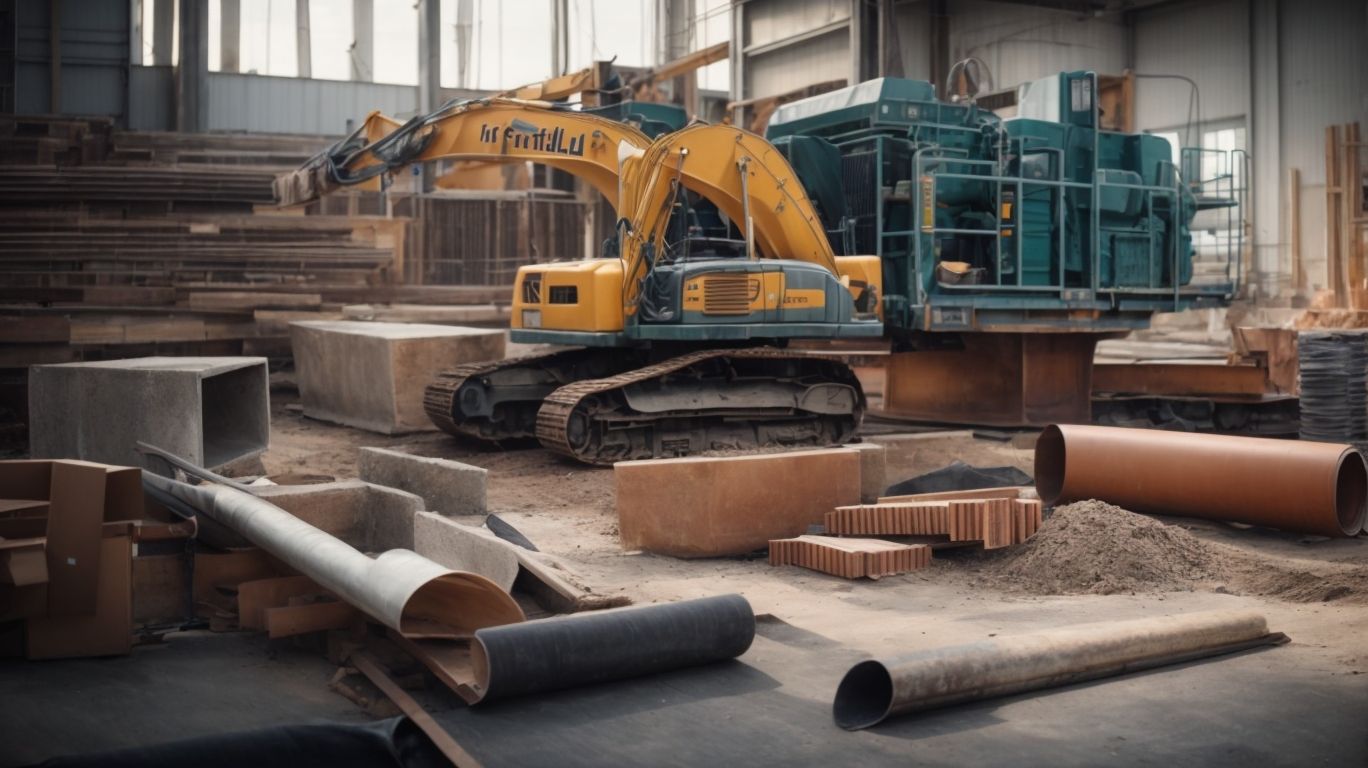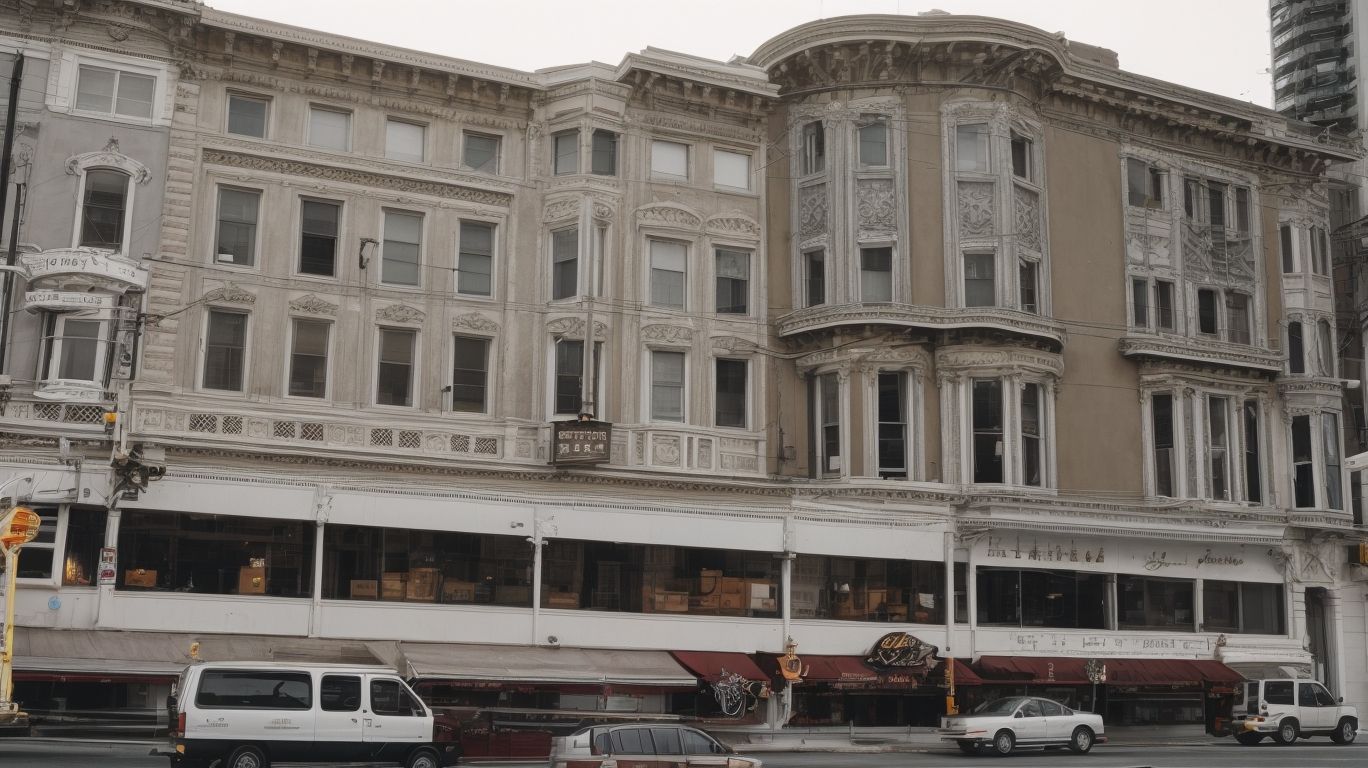
Innovations in Soft-Story Retrofit Materials
Soft-story buildings are characterized by a weaker ground floor compared to the upper stories, making them particularly vulnerable to earthquakes. This makes it crucial to retrofit these buildings with advanced materials to ensure their structural stability and resistance to seismic activity.
In this article, we will explore the different types of soft-story retrofit materials and their benefits. We will also discuss the factors to consider when choosing the most suitable option, as well as how the effectiveness of these materials is measured. This will shed light on the innovations driving the improvement of building safety standards.
What Is a Soft-Story Building?
A soft-story building is a multi-story structure with one or more floors that have large openings, such as windows or garage doors, creating a soft, weak story that lacks the necessary lateral load resistance.
Soft-story buildings are at high risk for structural vulnerabilities during seismic events. This can lead to disproportionate damage, endangering occupants and neighboring structures. As a result, seismic retrofitting has become crucial for improving the seismic resilience of these buildings.
Thanks to engineering advancements and updated building codes, there are now innovative retrofitting solutions available. These measures, such as adding steel frames, shear walls, or moment-resisting frames, effectively strengthen the weak story and minimize potential damage during earthquakes. This ensures the safety and stability of soft-story buildings.
Why Is Soft-Story Retrofitting Important?
Soft-story retrofitting is crucial due to the heightened earthquake risks faced by vulnerable building structures, necessitating effective solutions to enhance their seismic performance and resilience.
This seismic retrofitting approach directly addresses the structural weaknesses often found in buildings with open or weak first floors, commonly known as soft stories.
By implementing specialized technologies and engineering techniques, such as shear walls, moment frames, and specialized braces, these retrofits significantly improve the ability of buildings to withstand the forces exerted during seismic events.
The utilization of innovative retrofit technology plays a pivotal role in transforming these vulnerable structures into safer, more resilient assets, thereby reducing the potential for devastating damage and ensuring the safety of occupants.
What Are the Different Types of Soft-Story Retrofit Materials?
Soft-story retrofit materials encompass diverse options such as reinforced concrete, steel frames, and other innovative building materials designed to enhance the structural integrity and seismic resilience of vulnerable constructions.
Steel Frames
Steel frames are a commonly utilized soft-story retrofit solution, offering robust retrofit designs that enhance the seismic design and overall strength of vulnerable buildings.
The use of steel frames in soft-story retrofit designs addresses common structural weaknesses found in older buildings with open frontages. This reinforcement and fortification improves the building’s ability to withstand seismic forces.
Incorporating steel frames not only ensures compliance with current building codes and regulations, but also allows for customization based on the specific needs of each structure. This contributes to the longevity and stability of the retrofitted building.
Fiber Reinforced Polymer (FRP) Wraps
Fiber Reinforced Polymer (FRP) wraps provide innovative retrofitting systems that effectively address seismic load challenges, offering durable and adaptable solutions for soft-story retrofit applications.
Advanced systems in the retrofitting industry have gained attention for their resilience against seismic loads. One such system is FRP wraps, which use high-strength and flexibility to enhance structural performance. These wraps are lightweight, making installation easier, and have corrosion-resistant properties for long-term durability. Overall, FRP wraps provide sustainable and cost-effective solutions for improving structural resilience in seismic retrofitting applications.
Concrete Jacketing
Concrete jacketing is a prevalent choice in the construction industry, offering effective structural analysis and building renovation solutions to reinforce soft-story buildings against seismic actions.
Concrete jacketing is a technique used to strengthen existing structures by adding an extra layer of concrete or steel. This not only increases the load-carrying capacity and durability of the structure, but also improves its resistance to lateral forces, making it more resilient to earthquakes.
Proper planning and engineering expertise are crucial in the process of concrete jacketing to ensure seamless integration with the original structure. This results in enhanced strength and stability of the overall structure.
Shear Walls
Shear walls play a critical role in providing seismic protection and meeting building standards. They offer effective retrofit measures to enhance the structural resilience of soft-story buildings.
These walls are designed to withstand lateral forces and distribute them evenly throughout a building, reducing the impact of seismic activity. By integrating shear walls into the building’s design, engineers and architects can ensure that the structure meets the necessary building codes and standards for seismic resistance.
During retrofitting processes, reinforcing or adding shear walls can significantly improve a building’s ability to withstand seismic events. This ultimately enhances its safety and longevity.
What Are the Benefits of Using Soft-Story Retrofit Materials?
The utilization of soft-story retrofit materials yields numerous benefits, including increased structural stability, enhanced seismic resistance, and the implementation of efficient construction methodologies.
These materials provide added support to buildings with weak or open ground levels, reducing the risk of collapse during earthquakes and other seismic events. They offer a cost-effective solution to enhance the resilience of existing structures, avoiding the need for complete rebuilding.
The use of these materials also allows for minimal disruption during the retrofit process, enabling occupants to remain in the building during the upgrades, thus minimizing inconvenience and relocation costs. Soft-story retrofit materials play a vital role in fortifying structures and safeguarding communities against seismic hazards.
Increased Structural Stability
The incorporation of soft-story retrofit materials leads to increased structural stability, fostering building enhancements and the implementation of seismic upgrades for improved resilience.
This enhancement in structural stability is achieved through the strategic implementation of materials such as steel frames, concrete walls, and other reinforcement techniques. These materials are carefully chosen to address the specific vulnerabilities of soft-story buildings, providing a more robust framework to withstand seismic forces.
As a result, the overall structural integrity of the building is significantly strengthened, improving its capacity to resist potential damage during earthquakes and other natural disasters.
Improved Earthquake Resistance
Soft-story retrofit materials contribute to improved earthquake resistance, offering effective retrofit solutions and facilitating construction advancements for enhanced structural integrity.
They play a crucial role in fortifying buildings with vulnerable stories, such as open ground floors with large windows or commercial spaces, against seismic forces.
By incorporating innovative materials like steel frame supports, reinforced concrete walls, and energy-absorbing devices, these retrofit solutions enhance the overall resilience of structures in earthquake-prone areas.
The use of these materials has led to significant advancements in construction techniques, ensuring that buildings are better equipped to withstand the impact of seismic events, thus reducing the risk of structural damage and potential injuries.
Cost-Effective Solution
Soft-story retrofit materials provide a cost-effective solution for seismic improvements, demonstrating the potential of retrofit technologies to deliver efficient and economical seismic enhancements.
These materials offer a practical option for reinforcing vulnerable structures against potential seismic hazards. They play a crucial role in enhancing building resilience.
By integrating advanced retrofit materials and techniques, property owners can achieve substantial cost savings while ensuring the safety and stability of their buildings. The utilization of such materials not only bolsters the structural integrity of soft-story buildings, but also contributes to the overall safety and longevity of these structures. This makes them a valuable investment in mitigating seismic risks.
Minimal Disruption During Installation
The installation of soft-story retrofit materials ensures minimal disruption, aligning with efficient retrofit methodologies and facilitating building modifications without significant disturbances.
These materials are designed to seamlessly integrate with existing structural elements, making them ideal for retrofits and avoiding extensive structural modifications. With their versatile and adaptable nature, they allow for flexible installation and can effectively enhance the overall structural integrity of buildings.
Their compatibility with various building types and construction techniques provides a versatile solution for addressing soft-story vulnerabilities while minimizing the impact on daily operations.
What Are the Factors to Consider When Choosing Soft-Story Retrofit Materials?
Several critical factors must be considered when selecting soft-story retrofit materials. These include seismic regulations, building reinforcement requirements, and compatibility with specific construction methods.
When planning a soft-story retrofit project, it is crucial to select materials that comply with seismic regulations in the area. These materials should be able to reinforce the building structure and withstand seismic forces. It is also important to consider the compatibility with construction methods, as this can impact the ease of installation and long-term stability of the retrofit. Thoroughly evaluating these factors can help in choosing the right materials for a successful project.
Building Type and Size
The type and size of the building play a pivotal role in determining the appropriate soft-story retrofit standards and the extent of required seismic upgrades for effective resilience.
When it comes to retrofitting buildings for seismic resilience, taller structures with multiple stories may require more extensive strategies than smaller, single-story buildings. The type of building, whether it is residential, commercial, or institutional, also plays a role in determining the most effective retrofitting approach.
By considering these factors, engineers and building owners can develop customized solutions that target the specific vulnerabilities of each building, ultimately improving its safety and ability to withstand seismic events.
Seismic Zone
The seismic zone in which a building is located influences the selection of retrofit applications and the prioritization of building enhancements to align with specific seismic resilience requirements. This consideration is crucial in ensuring that buildings are equipped to withstand potential seismic events.
By acknowledging the unique demands of the specific seismic zone, engineers and architects can implement targeted retrofit solutions that address the vulnerabilities particular to that location. This approach not only enhances the overall resilience of the structure but also minimizes the potential for damage and disruption in the event of an earthquake.
Therefore, understanding the impact of the seismic zone is instrumental in designing and implementing effective retrofit measures.
Budget and Timeline
The budget and timeline considerations are integral in determining the feasibility of retrofit advancements and the implementation of effective seismic reinforcement measures for soft-story buildings.
They play a crucial role in ensuring that the necessary upgrades and modifications are not only technically sound but also financially viable.
Balancing the allocation of resources and labor with the urgency of seismic risk mitigation is essential for the successful completion of retrofit projects. Adhering to a well-defined schedule can also minimize disruption to occupants and businesses within the building, underscoring the significance of proactive planning and efficient execution in retrofit initiatives.
Building Codes and Regulations
Adhering to building codes and regulations is essential in driving construction developments and ensuring the achievement of optimal seismic resistance through the selection of appropriate soft-story retrofit materials.
Building codes and standards are essential for ensuring the safety and stability of structures, minimizing the risks of seismic events. Compliance with these regulations is crucial in constructing resilient buildings that protect communities from the devastating impacts of earthquakes. By incorporating seismic-resistant designs and materials, construction practices become more resilient. This also promotes sustainable development through energy efficiency, use of eco-friendly materials, and overall structural integrity.
How Is the Effectiveness of Soft-Story Retrofit Materials Measured?
The effectiveness of soft-story retrofit materials is assessed through various methodologies, including accelerated aging tests, shake table testing, and finite element analysis, to ensure their resilience and structural integrity.
Accelerated aging tests involve subjecting the materials to harsh environmental conditions and extreme temperatures over a short period to simulate long-term exposure.
Shake table testing, on the other hand, utilizes seismic simulations to assess the material’s response to earthquake-like forces, providing crucial insights into its ability to withstand seismic events.
Finite element analysis employs computer modeling to study the structural behavior of the materials, allowing for detailed predictions of their performance under varying loads and conditions.
Accelerated Aging Tests
Accelerated aging tests are utilized to evaluate the compliance of soft-story retrofit materials with established retrofit standards and their practical applicability within construction practices, ensuring robust structural enhancements.
In order to assess the durability and performance of materials over time, they are subjected to extreme environmental conditions and mechanical stress through testing. This process helps to determine their expected lifespan and suitability for retrofit applications. By comparing these results to retrofit standards, engineers and builders can confidently select materials that meet the necessary criteria for enhancing the seismic resilience of soft-story buildings. This ensures the safety and stability of these structures in the event of potential earthquakes.
Shake Table Testing
Shake table testing serves as a critical method for evaluating the seismic mitigation capabilities and overall effectiveness of retrofit strategies implemented through soft-story retrofit materials, ensuring their reliability and resilience.
This testing method involves subjecting structural models or full-scale buildings to simulated seismic forces, allowing researchers and engineers to assess how different retrofit strategies perform under earthquake conditions.
By replicating the complex and dynamic nature of earthquake-induced movements, shake table testing provides invaluable data for understanding the behavior of various retrofit materials and configurations.
This enables the refinement and optimization of soft-story retrofit designs, ultimately contributing to safer and more resilient structures in earthquake-prone regions.
The results obtained from shake table testing play a crucial role in informing building codes, construction practices, and the development of innovative retrofit solutions for enhancing seismic resilience.
Finite Element Analysis (FEA)
Finite element analysis (FEA) is instrumental in evaluating the potential for building improvements and seismic reinforcement offered by soft-story retrofit materials, providing comprehensive insights into their performance and applicability.
FEA allows engineers and architects to simulate real-life conditions and assess the behavior of various materials and structural configurations.
By conducting FEA, professionals can accurately predict the response of buildings to seismic loading, enabling them to make informed decisions about the most effective retrofit strategies. This analysis also aids in optimizing the design and material selection for soft-story retrofit projects, ensuring that the chosen materials and reinforcement techniques meet the required safety standards and performance criteria.




No Comments